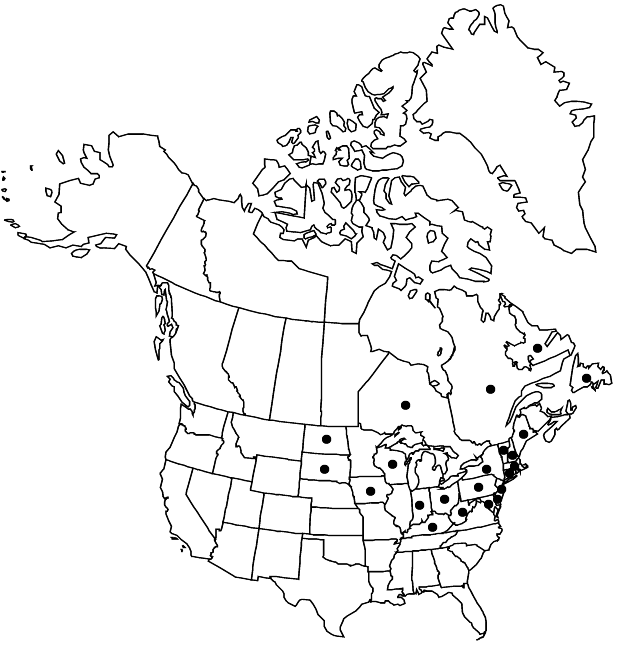Ribes uva-crispa
Sp. Pl. 1: 201. 1753 ,.
Plants 1–1.5 m. Stems erect, pubescent; spines at nodes 3, 5–10 mm; prickles on internodes present, scattered. Leaves: petiole 1–2 cm, pubescent; blade pentangular, 3–5-lobed, deeply cleft, 2–5 cm, base cordate to broad-cuneate, surfaces pubescent, lobes obtuse, margins crenulate-dentate, apex obtuse. Inflorescences spreading, solitary flowers or 2–3-flowered racemes, 1–3 cm, axis glabrous or sparsely lanate and stipitate-glandular, flowers evenly spaced. Pedicels not jointed, 2–4 mm, glabrous or sparsely lanate; bracts ovate, 1–3 mm, sparsely lanate, sparsely stipitate-glandular. Flowers: hypanthium greenish, short-campanulate, 4–6 mm, pubescent; sepals not overlapping, spreading, greenish abaxially, pink adaxially, strap-shaped, 5–7 mm; petals not connivent, erect, white, ovate, not conspicuously revolute or inrolled, 2–3 mm; nectary disc not prominent; stamens 2 times longer than petals; filaments linear, 4–6 mm, glabrous; anthers cream, oblong-oval, 1–2 mm, apex rounded; ovary sparsely hairy; styles connate to tip, ca. 6 mm, villous in proximal 1/2. Berries very palatable, greenish, ovoid, 10–20 mm, softly bristled.
Phenology: Flowering Mar–Apr.
Habitat: Thickets, fields, roadsides, other anthropogenic habitats
Elevation: 0-2500 m
Distribution

Nfld. and Labr., Ont., Que., Conn., Del., Ind., Iowa, Ky., Maine, Md., Mass., N.H., N.J., N.Y., N.Dak., Ohio, Pa., S.Dak., Vt., W.Va., Wis., w, c Europe (including Great Britain), n Africa, introduced also in n Europe (including Ireland), Atlantic Islands (Iceland).
Discussion
Culinary forms of gooseberry have been bred from Ribes uva-crispa.
Selected References
None.